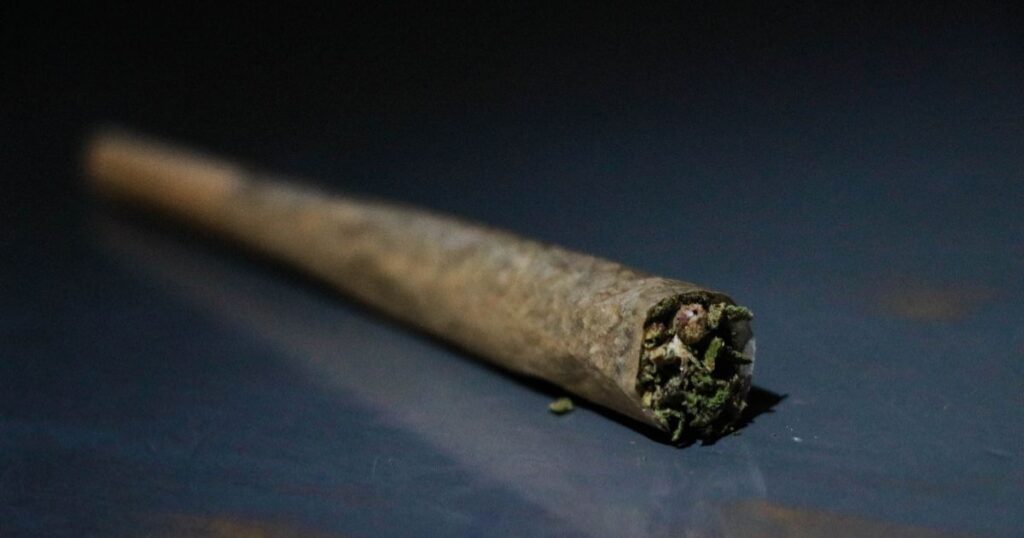A government-backed study from Japan has delivered compelling evidence against one of the most persistent myths surrounding cannabis use.
The research, published in Neuropsychopharmacology Reports and supported by Japan’s Ministry of Health, Labour and Welfare, examined substance use patterns among 3,900 cannabis users and found that marijuana rarely serves as a pathway to harder drugs.
The findings arrive at a time when policymakers worldwide continue to cite the gateway drug theory as justification for maintaining strict cannabis prohibition.
However, this study joins a growing body of international research that questions the fundamental assumptions underlying decades of drug policy.
What makes this research particularly significant is its origin. Japan maintains some of the world’s strictest cannabis laws, with possession carrying potential prison sentences. Yet even in this highly prohibitive environment, researchers found no evidence supporting the gateway hypothesis.
Instead, they discovered patterns that directly contradict longstanding claims about marijuana’s role in substance use progression.
Gateway Drug Theory
The gateway drug theory suggests that using certain substances, particularly cannabis, increases the likelihood of progressing to harder, more dangerous drugs.
This concept has shaped drug policy across numerous countries for decades, often serving as a cornerstone argument for maintaining cannabis prohibition.
Proponents of this theory point to statistical correlations showing that many users of hard drugs previously used marijuana. However, correlation does not establish causation, and this Japanese study specifically examined whether cannabis use actually leads to increased likelihood of trying other substances.
The research team, affiliated with several health and academic institutions across Japan, designed their study to move beyond simple correlations and examine actual progression patterns among cannabis users.
Study Methodology and Scope
The research involved an anonymous online survey conducted in January 2021, targeting individuals who reported lifetime cannabis use. The survey collected data on demographics, substance use history, order of substance initiation, psychiatric background, and criminal records.
Researchers used sophisticated analytical tools, such as Sankey diagrams to visualize substance use progression and calculated odds ratios to assess the probability of using other substances following cannabis use.
This methodology allowed them to examine not just whether people used multiple substances, but the actual sequence and likelihood of progression.
The study’s scope was impressive, with 3,900 participants included in the final analysis. The demographic breakdown showed 81.5% male participants, with the most common age group being 20-24 years. High school graduation was the most frequent educational level among respondents.
Key Findings That Challenge Conventional Wisdom
The study’s results directly contradict that cannabis is a gateway drug narrative. Rather than serving as an entry point to substance use, cannabis typically appeared as the third substance in users’ progression patterns.
Tobacco and alcohol emerged as the most common initial substances, with tobacco accounting for 48.1% of first substance use and alcohol representing 42.3%.
Perhaps most striking was the finding that cannabis was most frequently reported as the third substance used, appearing in this position among 68.2% of respondents. This pattern suggests that legal, readily available substances serve as the actual introduction to drug use for most people.
The odds ratios for progressing to other substances after cannabis use revealed remarkably low probabilities. The likelihood of subsequent alcohol use was only 1.25, while tobacco showed an odds ratio of 0.77. For methamphetamine, the odds dropped to just 0.08, and other illicit drugs showed an odds ratio of 0.78.
These numbers paint a clear picture: cannabis use does not significantly increase the likelihood of trying harder drugs. In fact, nearly half of those who reported cannabis as their third drug did not use any other substances afterward.
Legal Substances as True Gateway Drugs
The Japanese study reinforces findings from research in other countries showing that legal substances, particularly alcohol and tobacco, serve as the primary introduction to drug use. This pattern makes logical sense when considering accessibility and social acceptance.
Alcohol and tobacco are legally available to adults, socially normalized, and often introduced in family or social settings. These substances require no interaction with illegal drug markets and carry no criminal penalties for adult use. The research suggests that familiarity with mood-altering substances through legal means may influence later decisions about trying other substances.
This finding has significant implications for public health policy. If the goal is preventing progression to problematic drug use, focusing resources on reducing alcohol and tobacco initiation among young people may prove more effective than maintaining strict cannabis prohibition.
The accessibility factor cannot be overlooked. In Japan’s highly regulated environment, obtaining cannabis requires contact with the illicit market, yet the study found that legal substances still dominated initial use patterns. This suggests that availability and social acceptance play crucial roles in determining which substances people try first.
The Common Liability Theory
Rather than supporting a causal relationship between cannabis and other drug use, the research points toward what scientists call the “common liability theory.”
This idea suggests that shared underlying factors predispose certain individuals to experiment with multiple substances, regardless of which drug they encounter first.
These shared factors include genetic predisposition, psychological traits, socioeconomic status, educational background, and social environment. People with certain personality traits, such as higher sensation-seeking behavior or lower impulse control, may be more likely to try various substances when opportunities arise.
The common liability theory explains observed correlations between cannabis and other drug use without requiring a causal relationship. It suggests that the same factors that make someone likely to try cannabis also make them likely to try other substances, creating statistical associations that can be misinterpreted as evidence of progression.
This understanding has implications for prevention strategies. Rather than focusing solely on preventing cannabis use, effective interventions might address underlying risk factors that predispose individuals to problematic substance use patterns.
Prohibition’s Role in Creating Gateway Effects
One of the study’s most important insights concerns how prohibition itself may create gateway-like effects. In countries with strict drug laws like Japan, cannabis and harder drugs often circulate through the same illegal distribution networks. This shared illicit market environment increases users’ exposure to various substances.
When someone seeks cannabis in a prohibited market, they may encounter dealers who also sell other drugs. The illegal nature of the transaction removes regulatory safeguards and quality controls while potentially exposing buyers to substances they never intended to try.
This “regulatory gateway effect” suggests that prohibition policies may inadvertently create the very problem they aim to prevent. By forcing cannabis into illegal markets alongside harder drugs, strict enforcement may increase rather than decrease the likelihood of progression to more dangerous substances.
The implications extend beyond individual risk. Criminalization of cannabis use can lead to arrest records, employment difficulties, and social stigma that may actually increase vulnerability to problematic drug use patterns through social marginalization and reduced opportunities.
Cannabis is Not a Gateway Drug, But a Path to Recovery
While the Japanese study focused primarily on progression patterns, research from other countries has revealed an even more surprising finding: cannabis often functions as an “exit drug” that helps people reduce or eliminate use of more harmful substances.
Multiple studies from North America have documented significant reductions in alcohol and cigarette consumption following cannabis legalization.
Rather than leading to increased substance use, legal cannabis access appears to help some people substitute a less harmful substance for more dangerous ones.
Medical cannabis research has shown particularly promising results for reducing opioid dependence. Studies have found that patients with legal access to medical cannabis often reduce their use of prescription painkillers, benzodiazepines, and alcohol.
The American Medical Association has published research linking long-term medical cannabis use to reduced pain and lower dependence on traditional medications.
These findings suggest that cannabis may have therapeutic potential for addressing substance use disorders. Rather than serving as a gateway to harder drugs, marijuana might actually help people transition away from more problematic substances when used in appropriate medical contexts.
Implications for Drug Policy Reform
The Japanese study’s findings have significant implications for drug policy worldwide. If cannabis does not function as a gateway drug even in highly prohibitive environments, then gateway concerns cannot justify maintaining criminalization policies that cause documented social harms.
The research suggests that evidence-based drug policy should focus on addressing actual risk factors for problematic substance use rather than maintaining prohibition based on unsupported theoretical concerns.
Effective prevention strategies might emphasize education about legal substances like alcohol and tobacco, which the study identified as genuine entry points to drug use.
Harm reduction approaches that acknowledge the reality of substance use while minimizing associated risks may prove more effective than prohibition-based strategies.
The study’s findings support policy frameworks that treat substance use as a public health issue rather than primarily a criminal justice matter.
Countries considering cannabis law reform can use this research to counter gateway drug arguments that have historically impeded policy changes. The study provides particularly compelling evidence because it emerged from a country with exceptionally strict cannabis laws.
The research provides hope for evidence-based policy reform that prioritizes public health outcomes over ideological positions. By understanding the true factors that influence substance use patterns, societies can develop more effective prevention strategies while avoiding the documented harms of criminalization.
















